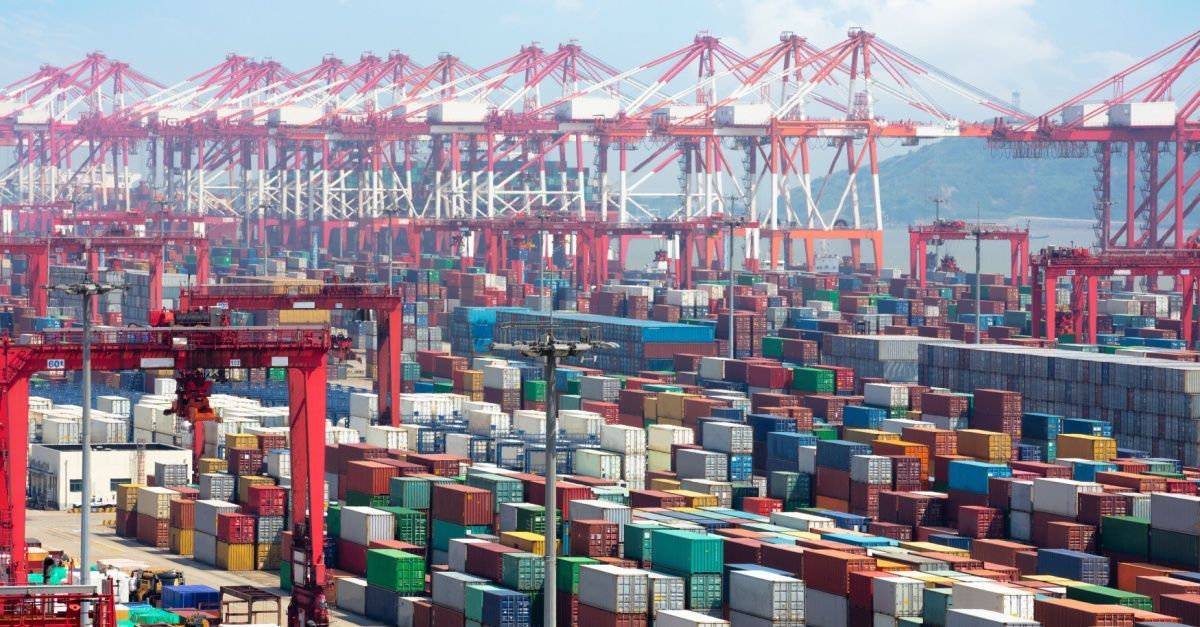Selecting the Perfect Expedited Trucking Company for Your Business
Blog Post CTA
How to Choose the Right Expedited Trucking Company for Your Business
In the past few years, e-commerce has escalated significantly while the global supply chain has tried to catch up. It has forced shippers to turn to expedited shipping in substantially increasing numbers. Data from a 2021 Ware2Go consumer survey showed that following the start of the pandemic, 33% of consumers have higher expectations for fast shipping, 40% have higher expectations for free shipping, and 42% expect a two-day shipping option for every online purchase.
Faster delivery service is no longer a luxury — it’s a necessity. Two-day, next-day, and same-day deliveries have become more common, putting pressure on shippers to execute flawlessly. Using a
3PL provider experienced in expedited truck delivery helps shippers gain a competitive advantage in a crowded transportation landscape.
Not all expedited trucking providers are created equal. In addition to exploring expedited shipping in this blog, we will also look at tips to help you find a reliable expedited trucking provider.
Why Expedited Trucking?
The disruptions in the supply chain over the past few years have left standard shipping in a precarious situation — where exceptions frequently delay deliveries. Shippers are finding the best way to overcome these disruptions is to depend more on expedited trucking: quickly moving freight to its destination. With supply chain uncertainty, the rise of e-commerce, and changing consumer expectations, the expedited route is fast becoming the shipping method of choice.
Guaranteed delivery times undoubtedly put pressure on shippers to keep high-stakes shipments on schedule. Shipping perishables naturally goes hand-in-hand with expedited shipping because delays can lead to spoilage and rejected loads. Shipments with a high theft risk are also strong candidates for expedited shipping.
As Expedited Trucking Booms, Shippers Look to Find the Right Expedited Trucking Service for Their Business
Shippers have much to be concerned about — from driver shortages and rising fuel prices to an increasingly unpredictable economy and a marked increase in competition. It’s a lot to deal with while maintaining steady profits. Shippers must look for every advantage, and one of those advantages is expedited shipping. Finding the right expedited trucking partner has become crucial to shippers that want to improve their bottom line. Let’s look at some tips to help you find the right partner.
Be Diligent with Details
To find an expedited shipping partner, a shipper must first delve into the details of how that company handles its business. Does it get products to their destination on time and free of damage? Is it able to handle last-minute requests? Are its rates too high? How satisfied are its customers? What services does it offer, and will those services fit your requirements? There needs to be more than a cursory look into these questions. Due diligence in checking out a potential partner is imperative to finding the right one to suit your needs. For instance, it might be worth looking into how wide a network they have to ensure they can handle your concerns and that the network can help your company when unavoidable situations arise.
Consider your Timeline
Carriers handle expedited shipping in different ways. It is, therefore, important to have a 3PL provider that can work with you on your timeline and has the experience and networking skills to determine which carrier can most handle that timeline. With different types of expedited shipping incurring different costs, it is essential to remember what is in your best interest logistically and financially. For example, you do not want a provider to always select a carrier that does the more expensive same-day or next-day delivery when a two-day delivery will do. Of course you want your shipments to be dispatched quickly, but you don’t want to be in a rush to choose who will do that shipping.
Prioritize Technology
Over the last few years, technology has significantly impacted expedited delivery. Partnering with a company that is keeping up with and using the latest technology is vital to your shipments reaching their destinations as quickly and efficiently as possible.
Recent tracking technology innovations are a perfect example of why you need a tech-savvy partner. With the latest tracking technology, carrier companies can quickly determine the locations of their trucks and keep everyone in the chain apprised of expected arrival times. The driver can also be advised of potential concerns on the road ahead and make appropriate route changes to avoid delays or missing the scheduled arrival time of the expedited delivery. Streamlining communication can speed up decision-making, helping shippers avoid potential setbacks.
But there are other ways in which technology can help shippers. By partnering with a company with the right user-friendly software platform, a shipper can use a larger pool of data to gain insight into which routes might be the quickest or which might help them avoid damage during the journey.
Trust the Experts
Whether you are entering the world of expedited shipping or trying to find a way to expand your business using it, you can always benefit from having an expert working on your behalf. That’s where a 3PL partner comes in handy. The staff on a reliable 3PL has the knowledge and connections to take the difficulties out of finding the most suitable carrier. They know which companies are dependable and can suit your specific needs. For instance, if you have perishables with a small window of freshness, they can find an expedited trucking firm that focuses on fast refrigerated shipping.
3PL providers often also have experience in other areas that can prove to be quite helpful for a shipper. They can offer everything from booking to invoicing with systems that integrate with your organization’s system. They can be licensed in pharmaceutical warehousing and distribution. In markets where
oversized and overweight hauls are required, your 3PL provider can help with route planning, permit pulling, and other tasks.
Capacity is Key
The most crucial factor in expedited shipping is speed — how fast can you get it there? But capacity cannot be ignored. You must have sufficient physical space, assets, and personnel to carry, store, or deliver goods to retailers and consumers who want them as soon as possible. Without the capacity, there can be no shipping, expedited or otherwise. And capacity is a crucial concern, particularly in these times of labor shortages and economic volatility. That’s why having a 3PL partner that can handle many different types of shipments gives you a keen advantage over the competition. 3PLs have the bandwidth to make all different types of transportation available — full-load, LTL, cargo van, refrigerated (reefer), or flatbed. They also can store and inventory all of your products at their warehouse.
Entourage Freight Solutions Has the Power to Help You Stay on Track With Expedited Shipping
Customer expectations have risen in recent years. They want products in their hands as soon as possible — this has become the norm, prompting many shippers to seek a competitive advantage through expedited shipping. The good news is shippers can turn to a 3PL provider that has experience in expedited truck delivery to help them through this busy and sometimes complicated landscape.
A 3PL not only can help pair a shipment with a carrier, but it can provide quite a few additional services that can ease the burdens of a shipper. To find the right 3PL, you need to consider several factors. Your 3PL must have a carrier that can stay on point with all the details of a shipment and have expert staff prepared for all potential situations. Also, a 3PL should have state-of-the-art technology that makes your shipment’s journey as easy as possible and should have the capacity to help you efficiently alter course when necessary.
Shippers can navigate that course quickly and effectively with a one-stop 3PL partner like
Entourage Freight Solutions. Entourage Freight Solutions has an extensive background and expertise in logistics, especially in a foodservice world that is almost always dealing with time-sensitive shipments. Its unmatched service and extreme attention to detail are perfect for a shipper with expedited shipping needs. Using the latest cloud-based, GPS-enabled technologies, EFS platforms can track drivers regardless of their location and reroute shipments when an obstacle arises. So, to get on the right track with expedited shipping,
request a quote today.









